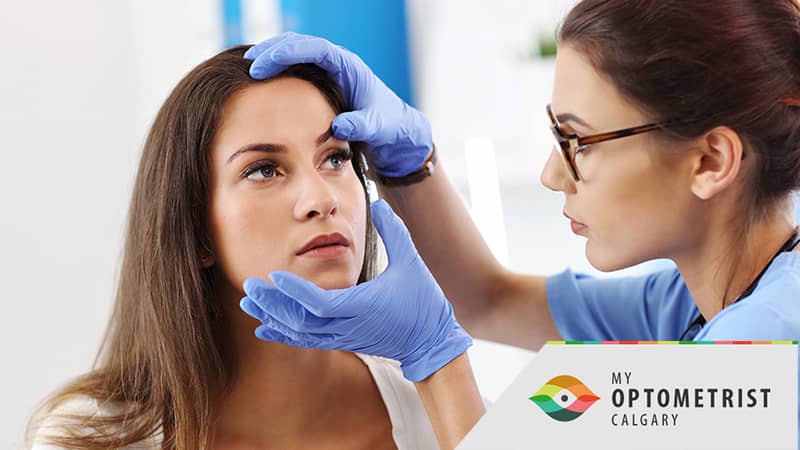
While certain aspects of your lifestyle, including diet and smoking habits, contribute to your eye health, other genetic factors also play a role. Gender can influence your eye health and women tend to be at greater risk for certain eye conditions. Gender is by no means the only factor in the development of these conditions, but it is one aspect that puts you at increased risk, particularly later in life during menopause when you may experience fluctuations in hormones that can cause changes in the eyes. If you are a woman, particularly one over the age of 50, here are the most common eye conditions affecting women. Be aware and discuss any concerns with your optometrist.
4 Conditions Common In Women
1. Dry Eye Syndrome
Also known as DES, this condition makes the eyes dry due to a lack of moisture either because the tears evaporate too quickly or because there are not enough tears produced in the first place. Tears are more than water; they contain oils and salts that are designed to lubricate the eyes. When the components of tears are not the correct ratio, it can lead to dry eyes. It’s very common for women to develop Dry Eye Syndrome during menopause or pregnancy when hormones fluctuate. Other common factors that increase the risk of developing DES include living in dry climates (such as Alberta), being over 50, taking certain medications, previous laser eye surgery, and allergies.
2. Cataracts
This is a clouding of the normally clear lens of the eye that gradually develops and limits vision. Unlike some other eye conditions, cataracts don’t affect your eye health and can be removed with cataract surgery to fully restore vision. As the cataract is developing, you may need regular prescription updates, since the clouding will affect the way light enters your eye. Cataracts typically develop at an increased rate in women, and it is hypothesized that higher levels of estrogen contribute to cataracts. Cataracts are caused by proteins and fibres breaking down in the lens. Diabetes, previous eye surgery, and long-term use of steroid medication are also thought to contribute to cataracts.
3. Glaucoma
This is a collection of eye diseases that damage the optic nerve often through increased pressure within the eye. Glaucoma can lead to permanent vision loss. The exact cause of glaucoma is not known, although gender seems to play a role as women are at a greater risk of developing primary angle-closure glaucoma. While women are shown to be at a higher risk for glaucoma than men in general, this risk increases once a woman hits menopause. This increased risk is partially due to age and partially due to the changes in hormones during this period.
4. Age-Related Macular Degeneration (AMD)
AMD is an eye condition that causes loss of central vision, making it difficult to perform tasks such as reading, driving, seeing faces, or otherwise focusing on details. As the name suggests, the main factor contributing to this eye condition is age, as AMD tends to develop after age 50. Gender also appears to increase the risk of developing AMD since two-thirds of AMD sufferers are women.
Book An Eye Exam For Women’s Eye Health And Safety Month
If you are a woman, especially a woman over 50, you should be screened for dry eye syndrome, glaucoma, cataracts, and age-related macular degeneration at least once a year. Regular eye exams that check for these conditions allow you to catch any development early and halt or slow the progression of the conditions. Schedule an eye exam at My Optometrist in Calgary and Three Hills and take control of your eye health. To book an eye exam with one of our optometrists, contact My Optometrist at one of our three locations, at Health First in SE Calgary, Sunridge in NE Calgary, or Three Hills, AB. You can also call us or fill out the online contact form.
FAQ
Q: What are the treatments for glaucoma?
A: Eye damage related to glaucoma can be deterred with the use of medicated eye drops, oral medication, and surgery.
Q: Is AMD painful?
A: No, AMD does not cause any pain as it progresses, which is why many people do not realize they are developing it until they visit their optometrist.
Q: Can dry eyes lead to glaucoma?
A: No. Glaucoma is one of the conditions that can cause dry eyes and your chances of getting both will increase as you age. Sometimes the eye drops used for glaucoma can have dry eyes as a side effect after prolonged use. Even though the two of them can occur together, DES itself does not cause glaucoma. If you think you might have glaucoma, you should schedule an eye exam with a My Optometrist eye doctor so you can catch it early.